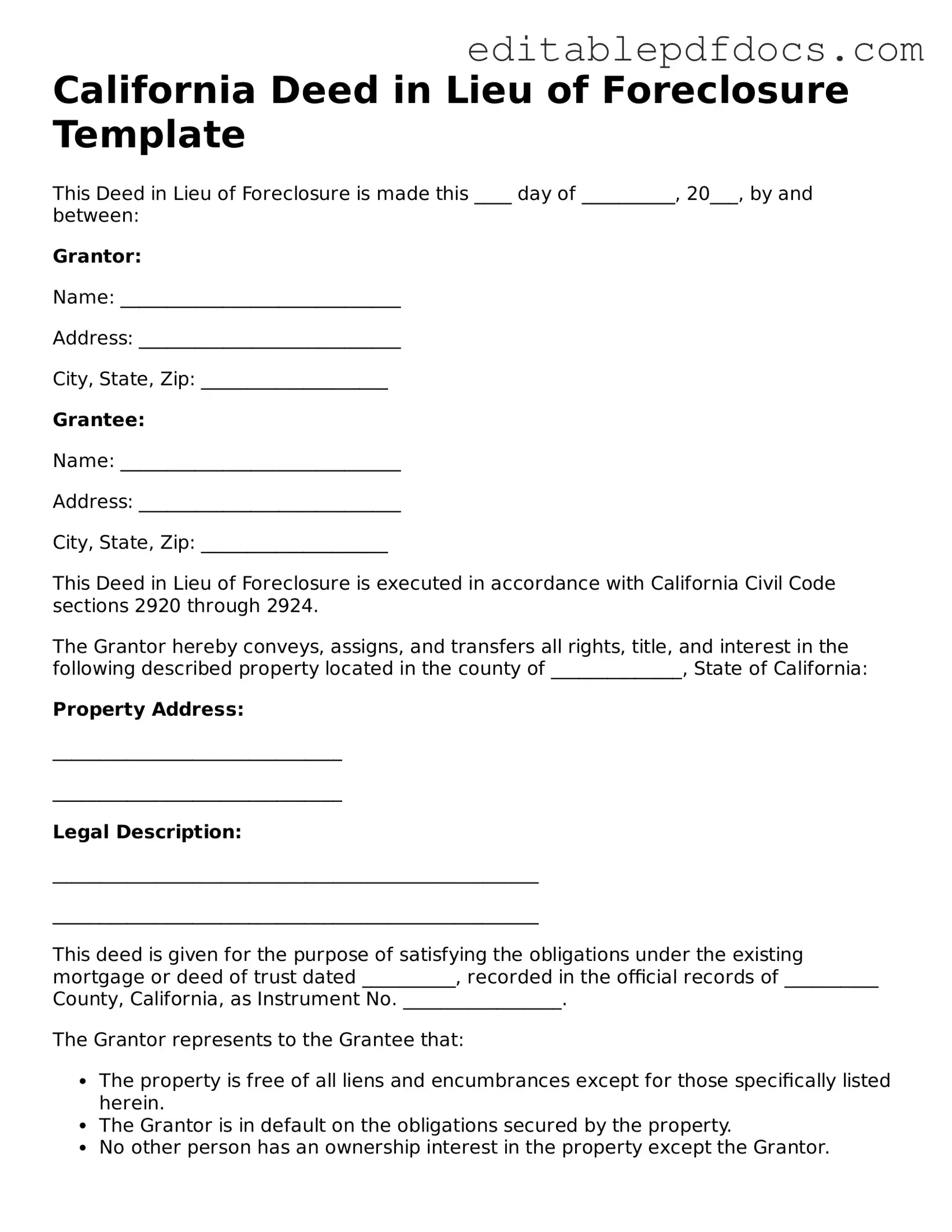In California, homeowners facing financial difficulties often explore various options to avoid foreclosure, and one of the most effective solutions is the Deed in Lieu of Foreclosure. This legal process allows a homeowner to voluntarily transfer ownership of their property back to the lender, thereby settling the mortgage debt without the lengthy and often stressful foreclosure process. By choosing this route, homeowners can mitigate the negative impacts on their credit score and potentially avoid the costs associated with foreclosure proceedings. The Deed in Lieu of Foreclosure form serves as the official document that facilitates this transfer, outlining essential details such as the property description, the parties involved, and any existing liens. Additionally, it typically requires the homeowner to provide a clear title to the property, ensuring that the lender can take possession without any complications. This option can be particularly beneficial for those who wish to move on from their financial struggles while minimizing the damage to their credit history. Understanding the intricacies of this form is crucial for homeowners considering this path, as it can significantly influence their financial future.
